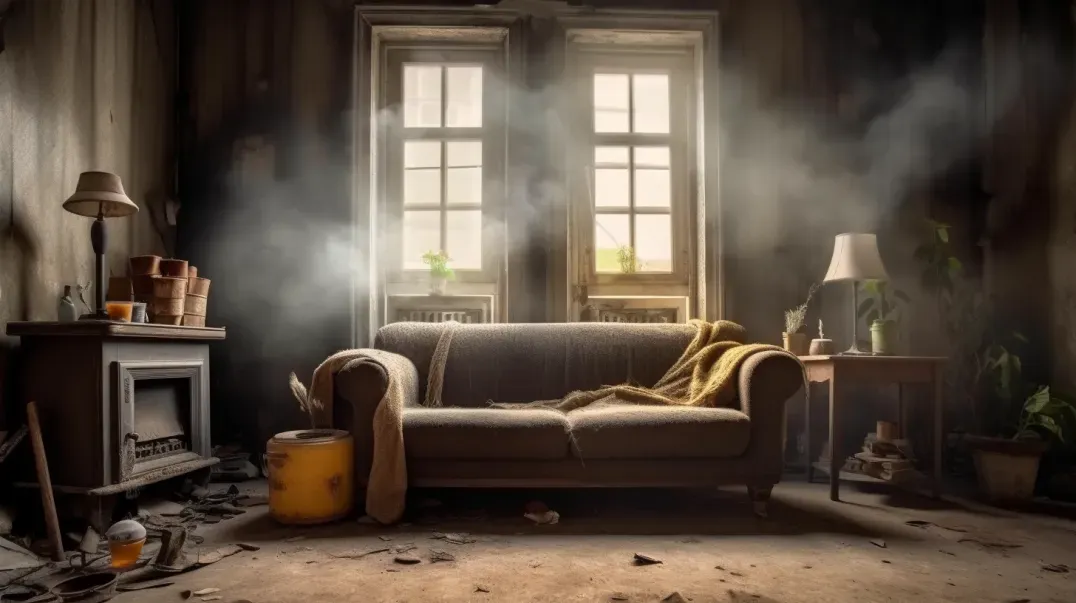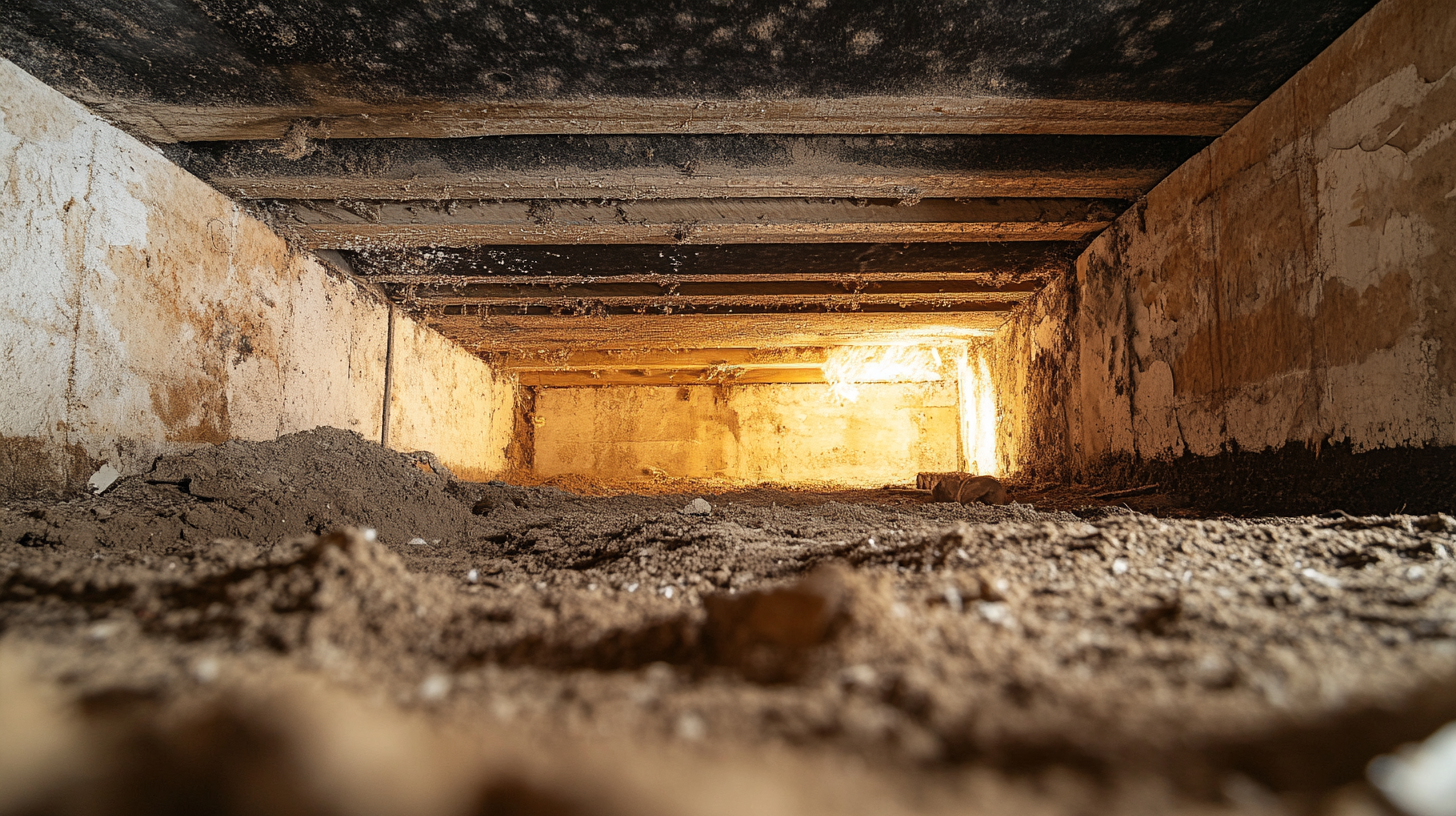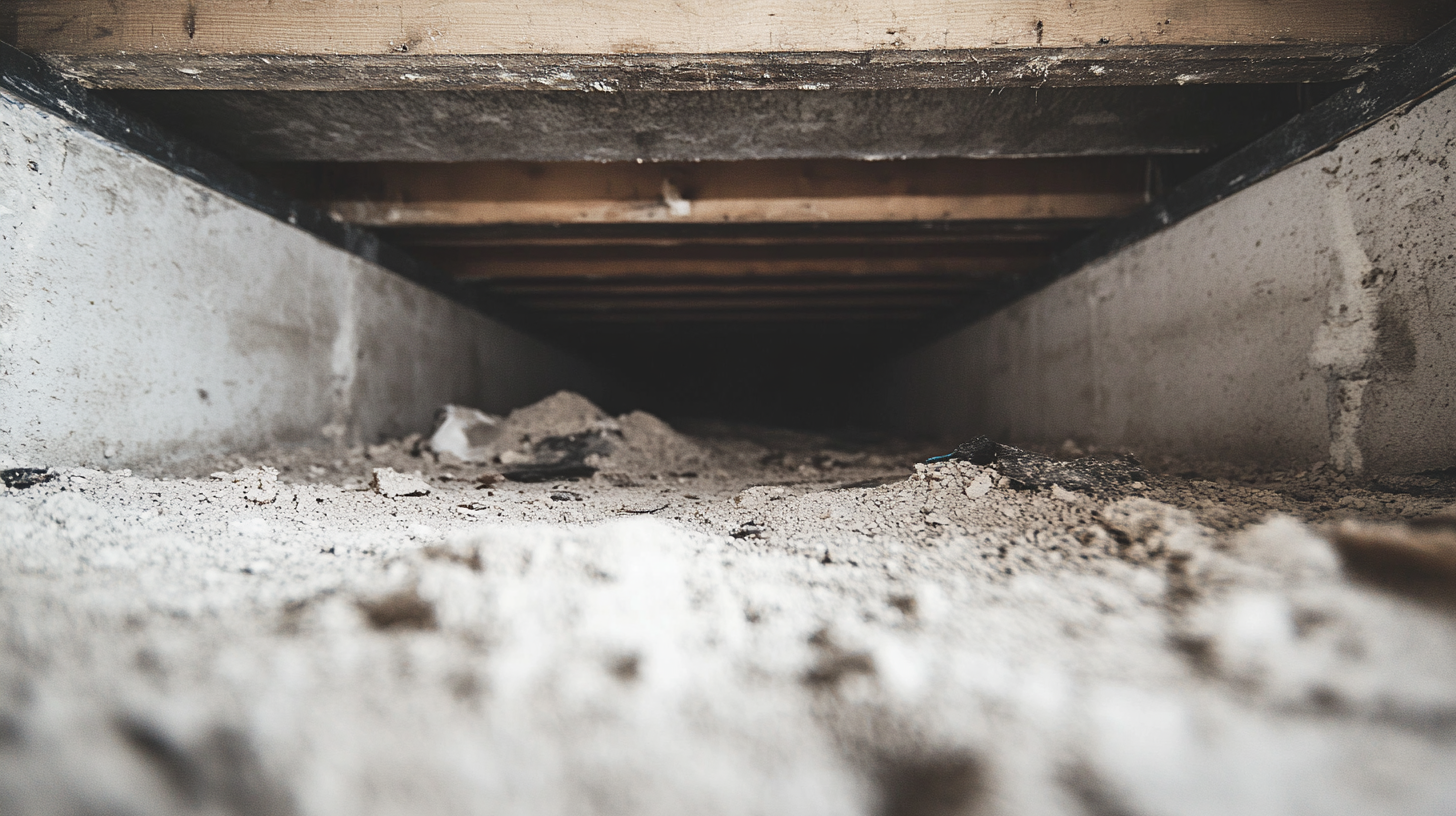Soot Removal After a Fire: A Step-by-Step Process

In the quiet aftermath of a fire, the challenges are just beginning. Among the most pervasive and persistent issues faced by homeowners and restoration professionals alike is the presence of soot. This fine, powdery substance, a byproduct of incomplete combustion, blankets surfaces, infiltrates the tiniest of crevices, and poses significant health risks, making its effective removal a paramount concern. The prevalence of soot after a fire incident cannot be understated; it is as certain as it is problematic.
Soot particles, composed of carbon and various toxic compounds, adhere to walls, ceilings, furniture, and personal belongings, leaving behind not only a visual reminder of the fire but also an olfactory one, with its distinct, acrid smell. The challenges of soot removal extend beyond the mere aesthetic, touching on health concerns due to the potential for respiratory issues and other health effects from prolonged exposure. Moreover, soot's acidic nature can cause further damage to materials it settles on, accelerating the deterioration of valuable items and the building structure itself.
Addressing the aftermath of a fire requires an understanding of the nature of soot, the scope of its impact, and the complexities involved in its removal. This blog aims to shed light on the prevalence of soot following fire incidents, the challenges it presents in the cleanup process, and the strategies for mitigating its effects. By delving into the intricacies of soot removal, we seek to provide insights and guidance to those tasked with restoring safety and normalcy in the wake of a fire.
Understanding Soot and Fire Damage
The aftermath of a fire presents a complex set of challenges, not least of which is the pervasive presence of soot. This fine particulate matter, a residue of incomplete combustion, blankets everything within the vicinity of a fire, from the walls of a home to the possessions it contains. Understanding the nature of soot and the broader implications of fire damage is crucial for effective cleanup and restoration efforts, as well as for safeguarding health and safety in the aftermath. This exploration delves into the composition of soot resulting from various materials burned in a fire and the potential health hazards and safety concerns it poses.
The Nature of Soot from Fires
Soot is composed of carbon particles that are produced when organic materials fail to burn completely. Its composition, however, is far from uniform; it varies significantly based on the materials that were burned.
- Organic Materials: When wood, paper, and natural fibers burn, the soot produced tends to contain a higher proportion of organic compounds, including cellulose and lignin derivatives. This type of soot can adhere strongly to surfaces and often carries a smoky odor.
- Synthetic Materials: The burning of plastics, synthetic fabrics, and other man-made materials results in soot that contains a variety of chemicals, including toxic hydrocarbons and acid gases. This soot is often more difficult to clean due to its oily or sticky consistency.
- Fossil Fuels: Combustion of coal, oil, and gas not only contributes to soot formation but also introduces sulfur and nitrogen oxides into the mix, making the soot more acidic and potentially corrosive.
Health and Safety Risks Associated with Fire Soot
The health and safety risks posed by soot are a significant concern in the aftermath of a fire. The small size of soot particles allows them to be easily inhaled, where they can penetrate deep into the lungs and even enter the bloodstream.
- Respiratory Issues: Inhalation of soot can exacerbate asthma and lead to bronchitis, other respiratory infections, and chronic lung conditions.
- Toxic Exposure: Soot particles can carry a range of toxic substances, including carcinogenic PAHs (polycyclic aromatic hydrocarbons), heavy metals, and dioxins. Long-term exposure increases the risk of cancer, heart disease, and neurological disorders.
- Skin and Eye Irritation: Direct contact with soot can cause skin irritation and exacerbate eczema. If soot particles enter the eyes, they can cause itching, redness, and conjunctivitis.
Understanding the complexities of soot and the risks it poses is the first step toward mitigating the impact of fire damage. Proper cleanup and restoration, coupled with appropriate safety measures, are essential for protecting those affected by a fire from the lingering effects of soot. By recognizing the diverse nature of soot and the hazards it presents, individuals and professionals can approach fire cleanup with the knowledge and caution necessary to ensure a safe and thorough recovery process.
Initial Steps and Safety Precautions
The aftermath of a fire presents a daunting challenge, with soot and debris posing risks not only to the structure of affected buildings but also to the health of those involved in the cleanup process. Before embarking on soot removal, it's crucial to assess the situation carefully and take appropriate safety precautions. This guide outlines the initial steps to evaluate fire and soot damage and the necessary safety gear to protect yourself during cleanup.
Assessing the Situation
A thorough assessment of fire and soot damage is essential to understand the scope of cleanup required and to develop an effective plan of action. Here are guidelines for evaluating the extent of damage:
- Visual Inspection: Conduct a comprehensive visual inspection of all affected areas. Note the extent of soot coverage on walls, ceilings, and personal belongings, as well as any structural damage caused by the fire.
- Identify Soot Types: Different materials produce different types of soot, each with specific cleaning requirements. Identifying the types of soot present can guide the selection of cleaning methods and products.
- Check for Water Damage: Often, firefighting efforts result in water damage. Assess for wet surfaces, waterlogged materials, and potential mold growth, as these will require additional cleanup steps.
- Document Damage: Take photographs and make detailed notes of all damage for insurance purposes and as a reference for the cleanup process. Documentation is crucial for both personal records and insurance claims.
Safety Gear and Precautions
Before starting the soot removal process, equipping yourself with the proper safety gear is paramount to protect against health hazards. Here's a list of necessary safety equipment and precautions:
- Respiratory Protection: Wear a N95 respirator or a half-face respirator with P100 filters to protect against inhalation of soot particles and other airborne contaminants.
- Protective Clothing: Don long sleeves, pants, and closed-toe shoes to minimize skin exposure to soot and debris. Consider disposable coveralls for extensive cleanup tasks.
- Gloves: Use nitrile gloves to protect your hands from soot, cleaning chemicals, and sharp objects hidden within debris.
- Eye Protection: Safety goggles or glasses can prevent soot and cleaning agents from irritating or damaging your eyes.
- Ventilation: Ensure the area is well-ventilated to disperse airborne particles. Open windows and use fans to circulate air, reducing the concentration of pollutants.
- Electrical Safety: Turn off electricity to the affected area to prevent electrical hazards, especially if water damage is present.
Taking these initial steps and safety precautions seriously can significantly mitigate the risks associated with soot removal and fire cleanup. Assessing the damage thoroughly and equipping yourself with the appropriate safety gear ensures that the cleanup process is not only effective but also safe for everyone involved.
Step-by-Step Guide to Soot Removal
In the aftermath of a fire, soot removal becomes a critical task to restore the affected environment to its pre-incident condition. Soot, a byproduct of incomplete combustion, can coat surfaces with a fine, powdery residue that is not only unsightly but potentially harmful. This guide provides a comprehensive approach to soot removal, detailing how to contain the affected area, remove loose soot particles, and clean and deodorize surfaces effectively.
Containing the Affected Area
Before beginning the soot removal process, it's essential to prevent the spread of soot to unaffected areas. Here are techniques to contain the affected area:
- Seal Off the Area: Use plastic sheeting and painter’s tape to seal doorways, vents, and other openings. This physical barrier helps to contain soot and cleaning agents within the affected area.
- Limit Traffic: Restrict access to the affected area to those involved in the cleanup process. This reduces the likelihood of soot being tracked into clean areas.
- Use Air Filtration: Deploy air purifiers with HEPA filters within the contained area to capture airborne soot particles, further preventing their spread.
Removing Loose Soot Particles
Safely removing loose soot particles is a crucial step in the cleanup process. Here's how to do it effectively:
- Vacuuming with HEPA Filters: Use a vacuum equipped with a HEPA filter to remove loose soot from surfaces. The HEPA filter is capable of trapping fine particles, preventing them from being recirculated into the air.
- Soft Brushing: For delicate items or surfaces that cannot be vacuumed, gently brush the soot away using a soft-bristled brush, capturing the dislodged particles with a vacuum nozzle held nearby.
Cleaning and Deodorizing Surfaces
Once loose soot has been removed, the next step involves deep cleaning and deodorizing surfaces to eliminate residues and odors.
- Soot-Specific Cleaners: Use cleaning agents specifically designed for soot removal. These products can effectively break down soot residues without damaging the underlying surface. Always follow the manufacturer's instructions for use.
- Washing Walls and Ceilings: Mix a solution of mild detergent and warm water. Using a sponge or cloth, gently wash soot-stained walls and ceilings, rinsing frequently. For painted surfaces, test the cleaning solution in an inconspicuous area first to ensure it does not damage the paint.
- Deodorizing: After cleaning, odors may persist. Use activated charcoal or commercial odor absorbers to eliminate lingering smells. For pervasive odors, consider consulting a professional who can perform thermal fogging or ozone treatment to neutralize odors at the molecular level.
By following these step-by-step instructions, individuals can tackle the daunting task of soot removal with confidence. Containing the affected area, meticulously removing loose soot particles, and thoroughly cleaning and deodorizing surfaces are key steps in restoring a clean, safe, and odor-free environment after a fire incident.
Special Considerations for Different Materials
The aftermath of a fire leaves behind soot that can cover everything in its path. However, not all materials are affected by soot in the same way, nor can they all be cleaned using the same methods. Understanding the nuances of soot removal from various surfaces is crucial for effective cleanup and preservation of affected items. This guide explores specific techniques for cleaning soot from hard surfaces like metal, glass, and hardwood, as well as strategies for addressing soot on soft, porous materials such as fabrics, upholstery, and carpets.
Soot Removal from Hard Surfaces
Hard surfaces, though seemingly easier to clean, require careful attention to avoid damage during the soot removal process.
- Metal: Soot can cause corrosion on metal surfaces if not promptly removed. Use a mild detergent mixed with water and a soft cloth to gently wipe away soot. For stubborn stains, a specialized metal cleaner may be necessary. Always dry metal surfaces thoroughly after cleaning to prevent rust.
- Glass: Glass can be cleaned using a solution of vinegar and water, which cuts through soot without leaving streaks. Apply the solution with a soft cloth and buff dry with a clean, lint-free cloth for a clear finish.
- Hardwood: Hardwood surfaces should be treated gently to avoid water damage and warping. Vacuum loose soot with a soft brush attachment, then clean the surface with a wood-safe cleaner. Apply the cleaner to a cloth rather than directly onto the wood to minimize moisture exposure.
Soot Removal from Soft Materials
Soft, porous materials pose a greater challenge due to their ability to absorb soot particles deeply into their fibers.
- Fabrics: Clothing and other fabric items may be cleaned using a washing machine with a heavy-duty detergent. Pre-treating heavily soiled areas with a stain remover can improve results. Consider multiple washes for stubborn soot stains and avoid using the dryer until the soot is completely removed to prevent setting the stains.
- Upholstery: Vacuum the upholstery with a HEPA filter vacuum to remove loose soot. For deeper cleaning, a foam upholstery cleaner can be used. Test the cleaner on an inconspicuous area first to ensure it does not damage the fabric. Professional cleaning may be necessary for delicate or heavily soiled items.
- Carpets: Begin by vacuuming the carpet thoroughly to remove loose soot. For soot stains, apply a dry cleaning solvent to a cloth and blot the stain, working from the outside in to prevent spreading. Deep cleaning by a professional carpet cleaning service may be required for extensive soot contamination.
Cleaning soot from different materials requires a tailored approach to ensure the material's integrity is preserved while effectively removing soot. By employing the appropriate techniques and cleaning agents for each type of surface, you can restore your belongings to their pre-fire condition with minimal risk of damage.
Advanced Cleaning and Restoration Techniques
The aftermath of a fire can leave behind a daunting challenge: soot and smoke damage that affects not only the structure of a home or building but also the valuables and heirlooms within. While some items can be cleaned with basic techniques, others require advanced cleaning and restoration methods to return them to their pre-damage state. This guide explores professional cleaning solutions for comprehensive soot removal and delves into the special considerations necessary for restoring valuables and heirlooms affected by soot.
Professional Cleaning Solutions
When soot damage is extensive or involves sensitive materials, professional cleaning services offer advanced methods that go beyond the capabilities of DIY approaches. These services utilize specialized equipment and techniques to safely and effectively remove soot and smoke residues.
- Thermal Fogging: This method involves using a thermal fogger to penetrate surfaces and neutralize smoke odors, effectively reaching areas that are otherwise inaccessible.
- Ultrasonic Cleaning: Ultrasonic cleaners use high-frequency sound waves to create cavitation bubbles in a cleaning solution, which then collapse and remove soot and dirt from detailed and delicate items.
- Ozone Treatment: Ozone generators are used to break down smoke molecules and eliminate odors from rooms and furnishings, providing a deep deodorization that air fresheners and open windows cannot achieve.
When to Consider Professional Services: If the soot damage is widespread, involves HVAC systems, or affects valuable or delicate items, it's time to consider professional soot removal services. Professionals have the expertise and equipment to handle complex situations, ensuring a thorough cleanup and restoration process.
Restoration of Valuables and Heirlooms
Valuables and heirlooms, with their sentimental and monetary value, require special attention during the restoration process. Here are techniques and considerations for restoring these precious items:
- Assessment and Documentation: Begin by carefully assessing the extent of soot damage and documenting each item's condition. This information can be crucial for insurance purposes and in deciding the restoration approach.
- Gentle Cleaning Techniques: For delicate items, gentle cleaning techniques are paramount. Soft brushes, cotton swabs, and mild cleaning solutions can remove soot without causing additional damage.
- Professional Art and Antique Restoration: For artwork, antiques, and other highly valuable items, consult with professional restorers who specialize in art and antique conservation. These experts can employ advanced techniques to safely restore items to their original condition.
Restoring valuables and heirlooms affected by soot requires a delicate balance between thorough cleaning and preserving the integrity of the item. In many cases, the expertise of professional restorers can be invaluable in achieving this balance, ensuring that cherished items can be enjoyed by future generations.
FAQs
Contact Fast Response Cleaning & Restoration Today!
Fast Response Cleaning & Restoration will do everything we can to ensure your experience with us is excellent.
Request A FREE Estimate
Request A FREE Estimate Form
CHECKOUT RECENT POST



Have an Emergency? We're Here to Help!
When it comes to disaster cleanup, we are a seasoned veteran in the industry and have helped hundreds of property owners just like you.
Our disaster recovery teams are available 24-7 to quickly clean up and repair disasters of all types.
